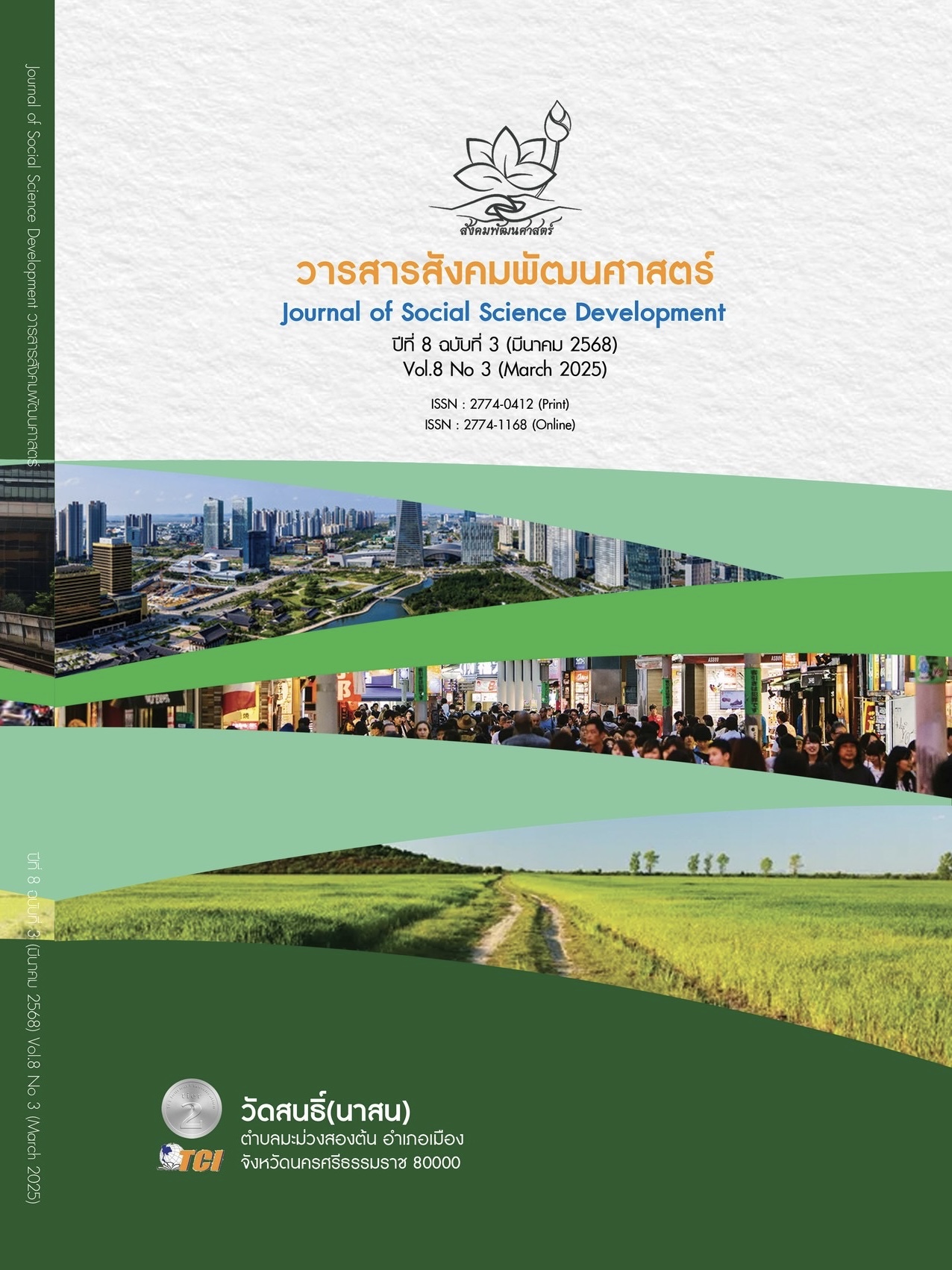THE ORGANIZATIONAL REWARD SYSTEM
Main Article Content
Abstract
The research aims to study the characteristics of the compensation system of organizations in the United States and its applicability to Thailand. This is a qualitative study that involves reviewing documents and research related to the compensation system of organizations in the United States. The findings reveal that aspects of the U.S. compensation system can be applied to Thailand in two key areas: 1) Legally mandated benefits, which include personal benefits such as salaries, special compensation, annual bonuses, and social security. 2) Discretionary benefits, which encompass privileges and welfare benefits such as career advancement opportunities, job satisfaction, skill development, and workplace environment. These factors serve as work incentives and influence employee performance Additionally, it was observed that applying the U.S. compensation system to Thailand has led to redundancy, causing an imbalance between workload and compensation. For instance, the workload often exceeds the available workforce, and the structure and workforce framework do not support career growth. Further recommendations include: Adjusting the base salary for existing employees based on their performance. Enhancing benefits to align with economic conditions, cost of living, and consumer price indices. Restructuring salary scales based on job value, job responsibilities, required skills, and job complexity. Providing training and development programs that meet employee needs. Modifying the workforce structure to align with career progression principles and regulatory requirements. Recognizing and rewarding outstanding employees. Lastly, the compensation system in the U.S. differs significantly from that in Thailand, as it is more complex and comprehensive. However, the U.S. compensation system is highly effective in meeting employee needs.
Article Details

This work is licensed under a Creative Commons Attribution-NonCommercial-NoDerivatives 4.0 International License.
References
วรรณวิชนี ถนอมชาติ. (2562). การบริหารค่าตอบแทนจูงใจสำหรับอาจารย์ต่างช่วงอายุในสถาบันอุดมศึกษาของรัฐในประเทศไทย. ใน รายงานการวิจัย. สำนักงานคณะกรรมการอุดมศึกษาและสำนักงานกองทุนสนับสนุนการวิจัย.
วิภาดา ปัตถนานนท์. (2544). การประเมินผลการปฏิบัติงานเพื่อเลื่อนขั้นเงินเดือนในระบบเปิดของหน่วยงานกรุงเทพมหานคร ศึกษาเฉพาะกรณี : สำนักงานเขตบางกะปิ กรุงเทพมหานคร. ใน วิทยานิพนธ์รัฐประศาสนศาตรมหาบัณฑิต สาขารัฐประศาสนศาสตร์. จุฬาลงกรณ์มหาวิทยาลัย.
สุภาพร พิศาลบุตร. (2562). การบริหารค่าจ้างและเงินเดือน. (พิมพ์ครั้งที่ 6). กรุงเทพมหานคร: ศูนย์หนังสือมหาวิทยาลัยราชภัฏสวนดุสิต.
Bernardin, H. J. et al. (2013). Human Resource Management. New York: McGraw-Hill Education.
Decarlo, S. (2005). Special Report: CEO Compensation. Forbes. Retrieved September 10, 2024, from http://www. Forbes.com/2005/ceoland
Dessler, G. (2013). Human Resource Management. Edinburgh Gate. Harlow: Pearson Education Limited.
Gómez, P. J. et al. (2007). Organizational learning and compensation strategies: Evidence from the Spanish chemical industry. Global Business and Organizational Excellence, 26(3), 51-72.
Martocchio, J. J. (2011). Strategic Compensation. Upper Saddle River. New Jersey: Prentice Hall.
Mondy, R. (2010). Human Resource Management. Boston: Prentice Hall.
Ryne, S. L. et al. (2004). The importance of pay in employee motivation. Human Resource Management, 43(4), 381-394.

